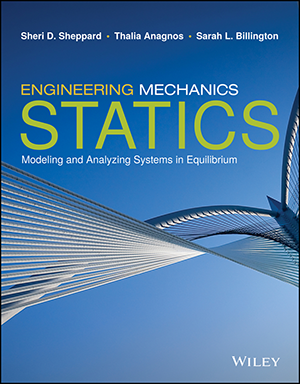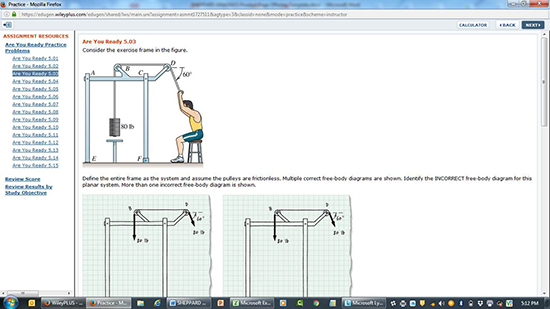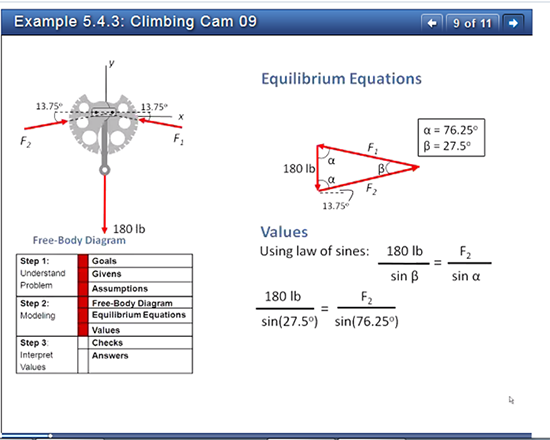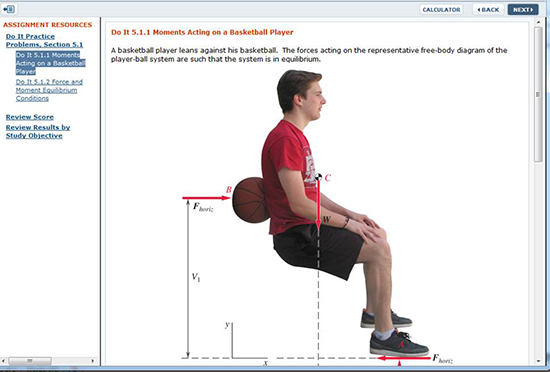
Engineering Mechanics: Statics, 1st Edition
By Sheri D. Sheppard, Thalia Anagnos, and Sarah L. Billington
Engineering Mechanics: Statics is an online learning system designed to address the key learning and teaching issues in today’s engineering mechanics courses. Built for a digital environment, this program includes powerful and customizable resources to facilitate mastery of introductory statics concepts for students with a wide range of abilities and backgrounds. Scaffolded practice and feedback are incorporated throughout to help build student competency, confidence, and commitment.
WileyPLUS for Engineering Mechanics includes ORION Adaptive Practice that helps students build their proficiency on important prerequisite math and physics topics and use their study time most effectively.
Schedule a Demo Sign Up for a Test Drive Adopt WileyPLUSWant to learn more about WileyPLUS? Click Here

Diagnostic assessment before each chapter helps students prepare for what’s ahead.
Students can gauge their readiness for each new chapter—and what they may need to review further—with a brief diagnostic quiz.

Instructional cadence implements a consistent “tell, show, do” approach.
For each new major concept within a chapter, students will read or watch a passage that develops the concept, see solved examples that apply it, and have an opportunity to master the concept through progressive, interactive exercises.

Scaffolded instruction and practice helps all learners improve skills.
Scaffolded practice exercises and a selection of homework problems use techniques such as hints, partial solutions, feedback on common mistakes, and progressive complexity to build student confidence and reinforce skills.

Sheri D. Sheppard is Professor of Mechanical Engineering at Stanford University. In addition to publishing technical papers, reports, and textbooks, she has led or co-led several large, multi-institutional projects to build new educational research programs and related resources, such as the Center for the Advancement of Engineering Education (CAEE), The National Center for Engineering Pathways to Innovation (Epicenter), and a program on summer research experiences for high school teachers.

Dr. Thalia Anagnos is the Associate Vice President of Graduate and Undergraduate Programs at San Jose State University (SJSU). She is a former Engineering professor. Her teaching and research interests included mechanics, structural analysis, reliability, seismic hazard, loss estimation, and engineering education and pedagogy. In 2012, she received the SJSU Outstanding Professor Award.

Sarah L. Billington is the Milligan Family University Fellow in Undergraduate Education, Professor of Civil and Environmental Engineering, and Senior Fellow at the Woods Institute for the Environment at Stanford University.
Hear the authors describe their inspiration for developing this course and how it can help you drive your student engagement and success.
Chapter 1: Principles and Tools for Static Analysis
Chapter 2: Forces
Chapter 3: Moments
Chapter 4: Modeling Systems with Free- Body Diagrams
Chapter 5: Mechanical Equilibrium
Chapter 6: Distributed Force
Chapter 7: Dry Friction and Rolling Resistance
Chapter 8: Member Loads in Trusses
Chapter 9: Member Loads in Frames and Machines
Chapter 10: Internal Loads in Beams
Chapter 11: Internal Loads in Cables

